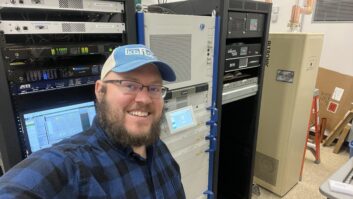
Fig. 1: This test lead holder, top, comes courtesy of the post-holiday trash pile.
Do you still have your holiday lights displayed? Given the amount of effort necessary to put them up, maybe it’s not a bad idea to keep them running into February!
Here’s a tip that you might tuck away for next holiday season.
Sunbury Broadcasting’s Director of Engineering Harry Bingaman decided this year to go green with the Christmas decorations. What also prompted this move to LEDs was the age-old question: “How does an incandescent set of 100 lights go bad sitting in a storage box for one year? They were working when I put them away the year before!”
Rather than design a TDR for light strings, Harry made the switch to LED. When he finished, he started to clean up the packing material that came with the new holiday lights, including those neat little plastic holders that keep the contents secure for shipping.
Seeing these holders, Harry’s own light bulb came on. Now he has repurposed them. These are perfect for organizing workbench test cables and probes, as seen in Fig. 1.

Fig. 2: The project starts with the holiday light wrappings. Harry used a heat gun to warm the plastic tabs. This permitted him to bend them over to form mounting tabs. He selected self-tapping screws to mount the modified plastic assembly to the front of one of his many steel book cases.
The little project turned out well and he saved plastic from the landfill.
If you dream up a solution like this, be sure to take a picture, then copy a page from a catalog showing “professional” cable holders. Show the pix to your GM and explain how you saved the station money. “See? Engineers don’t always just spend!”
* * *
Speed problems are a complaint that consultant and RW contributor Tom Osenkowsky encounters when he’s working with cassette decks. Yes, some stations still use them.
For machines with an internal speed adjustment pot, one normally employs a test tape with a prerecorded 1000 Hz tone and then adjusts for that frequency as measured by a frequency counter monitoring the playback.

Fig. 3: A heat gun is used to make the plastic tabs pliable. For those who do not have access to such a test tape, here’s a method to set the motor speed with great accuracy.
You will need a dual-trace scope, an audio oscillator and a new cassette tape (C-90). Wind the tape to mid-span. Clean the heads, capstan and pinch roller using a cotton swab and isopropyl alcohol. Install a new pinch roller, if you have one.
Feed the audio oscillator output to the cassette deck audio input and to Channel 1 of your scope. Set the oscilloscope sync to Channel 1. Adjust the time base for several cycles of the tone to be displayed. Feed the audio output of the cassette deck to Channel 2 of the scope.
Set the scope to dual-trace mode and adjust the oscillator to 1000 Hz or thereabouts. The exact frequency is not important, but it must remain constant. Now set the audio input level on the cassette deck to 0 VU. Record 60 seconds of the tone.
Play back the tone you just recorded, and adjust the motor speed until the two sine wave displays sync up as close as possible. You have now adjusted the motor speed to match the frequency of the audio oscillator (which has remained constant), accurately setting it to standard speed.
Repeat this procedure for the other speed if you have a dual-speed deck.
(Then there was the jock who was adjusting the production room cassette machine heads so his tapes sounded good! That’s right, his home machine was out of alignment and he was using that as a standard. A quick sweep of the studios to remove any and all Greenies cut down on this kind of unwanted “help.” That the PD threatened the jock with his job didn’t hurt, either.)
* * *
We’re still getting suggestions to Bruce Blanchard’s osprey problem, first discussed in the Nov. 18 issue.

Fig. 4: Bird-X makes bird and pest control products. Contract engineer Jack Elmore also works full-time for the communications division of a power company and is familiar with bird issues on its microwave towers. Jack points Workbench readers to Bird-X (www.bird-x.com). This company has provided humane bird and pest control methods since the 1960s.
Non-metallic bird spikes placed on the rim of the dish and along the feed horn assembly discourage birds from using these surfaces as a perch. The non-metallic construction means no detuning or pattern distortion.
There’s a picture of this on the home page. The curved spikes look like eyelashes as they run the circumference of a satellite dish.
Jack also has mounted plastic owls on his microwave towers to discourage birds. In this case, the problem is not so much interference but the real mess caused by their droppings.
* * *
Long-time San Francisco engineer Bill Ruck showed our osprey Workbench column to his wife Siobhan, whom he describes as a “major bird geek.” She works with the Golden Gate Raptor Observatory (www.ggro.org).
She says the time to do something is right now because once the birds nest, you cannot disturb them in any way, as they are protected by federal law. They begin nesting during March and April.
As to a solution, Bill suggests using some light black netting tied around the rim of the dish and to the feed horn. This netting also can be found on the Bird-X Web site. At first I was hesitant to print this suggestion, thinking that if a bird’s feet or wings got caught in the netting, you’d have an even bigger problem, especially if they are a protected species. But the netting shown on the Bird-X site is a very close weave, with squares that look to be 1/2 inch or less.
John Bisset marked his 40th year in broadcasting recently. He is international sales manager for Europe and Southern Africa for Nautel and a past recipient of the SBE’s Educator of the Year Award. Reach him at[email protected]. Faxed submissions can be sent to (603) 472-4944.
Submissions for this column are encouraged and qualify for SBE recertification credit.












